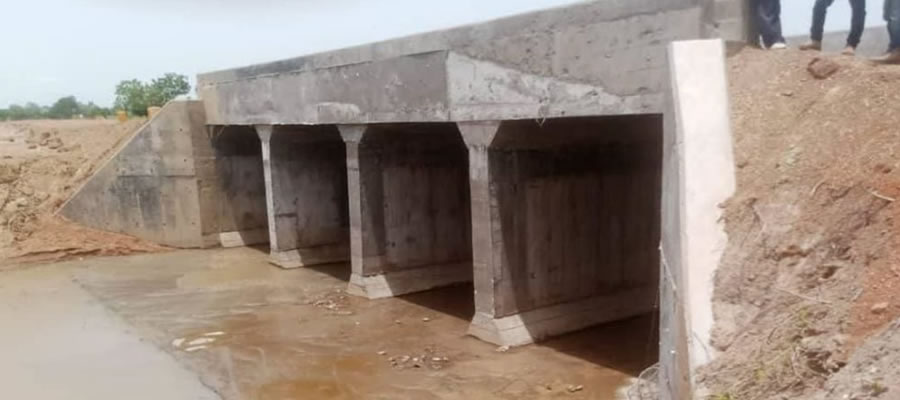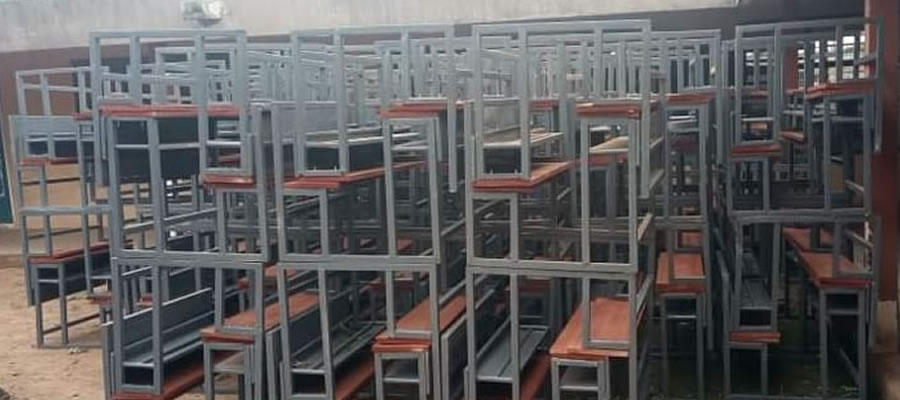

Investment and Business Potential
Between 1996 and 1998, the Saboba District Assembly implemented sixty-eight separate projects from its medium term (5 – year) plan involving a total cost of ¢2,215,700,000. These projects were deliberately and carefully designed to improve the social and economic infrastructure of the district with a view to alleviating poverty and providing a proper enabling environment for free market entrepreneurship to thrive.
Indeed, the Saboba District Assembly is carefully but aggressively addressing the problems facing the area and carrying out projects and programme, which will enable the public and private sectors, in partnership, to utilize the vast economic opportunities that exist within the district for the purpose of accelerated development within the context of social justice and equity.
The Saboba District has a lot of opportunities awaiting private investment and joint ventureship with the public sector, predicated both on the district’s natural and human resources as well as the social infrastructure, which the District Assembly has put in place.
In the agricultural sector, studies have indicated that cultivation of crops such as millet, sorghum, beans, maize, rice, cassava, yam and groundnut is suitable throughout the district. Available records show that the district leads in the Northern Region as far as the production of tuber crops like yam and cassava are concerned. The District Assembly therefore actively encourages large-scale production of such crops.
The district is noted for the production of industrial crops such as cotton, particularly in Chereponi sub-district, groundnut, soya-beans, and tomatoes. The district is endowed with vast land suitable for livestock production. The district is blessed with a good breed of cows, sheep, goats and pigs.
Another area of investment with rich potentials is poultry production. Although farming activities are hampered by problems such as lack of credit facilities and inadequate access to extension services, private investors interested in agriculture can enjoy several advantages. The district has favourable weather conditions for agriculture all the year round.
The district is under-lain by Middle Voltarian rocks normally suitable for rural water supply through boreholes. Along the valleys of rivers are large stretches of arable land good for cultivation of rice and cereals particularly around Kpalba. It should be noted that acquisition of land for farming is not a problem. Rainfall in the district is seasonal like any other district in the savannah belt.
Rains begin in May and end in the latter part of October. July to September is normally the peak period. The district experiences floods during the peak period. The rest of the year is dry. Average rainfall is between 25.500C and 35.00C. Saboba District is endowed with quite a number of potentials for a sustainable development programme.
The area is blessed with water resources i.e. River Oti and its tributaries like Wape and Tanga, which can provide good potable water. This potential can support fishing development, creates irrigation possibilities and also a potential for a water transport system. The banks of these rivers are sources of sand for the building industry.
The River Oti is a gateway to the Republic of Togo and investors in trade and agriculture would be assured of markets, even outside the district. Small irrigation projects could be sited along the valleys and banks of these rivers to enhance dry season vegetable cultivation. Another area which has a great potential to be harnessed for development is the human resource base of the district.
The people are hardworking. There are quite a number of artisans (products of Saboba Tehcnical School and other schools) in the district. About 45% of the population is within the working age. All these could be useful in the development of commerce and cottage industrial activities. Apart from a few blacksmithing activities in the major towns like Saboba, there are no manufacturing activities in the district.
However, the district has potentials in the production of some crops in good quantities, which would serve as raw materials for small-scale industrial set-ups. The shea tree is grown widely and the nuts picked in abundance. Groundnut is grown in the district. There is a large quantity of cay soils in the district. Millet and sorghum are grown for food and brewing of pito, a local drink.
In addition, apart from health centres and clinics which are located at Saboba, chereponi, Sambuli, Wapuli, Wenchiki and Kpalba to provide health care delivery, there is a 24-hour supply of hydro-electric power, which potential investors can tap for economic activities.
Financial Institutions
Currently, there is no financial institution in the district to facilitate savings for socio¬economic development. However, attempts are being made to establish a Rural Bank in the district for mobilization of capital for socio-economic development in the district.
Date Created : 11/18/2017 7:46:33 AM












 facebook
facebook
 twitter
twitter
 Youtube
Youtube
 +233 593 831 280
+233 593 831 280 0800 430 430
0800 430 430 GPS: GE-231-4383
GPS: GE-231-4383 info@ghanadistricts.com
info@ghanadistricts.com Box GP1044, Accra, Ghana
Box GP1044, Accra, Ghana